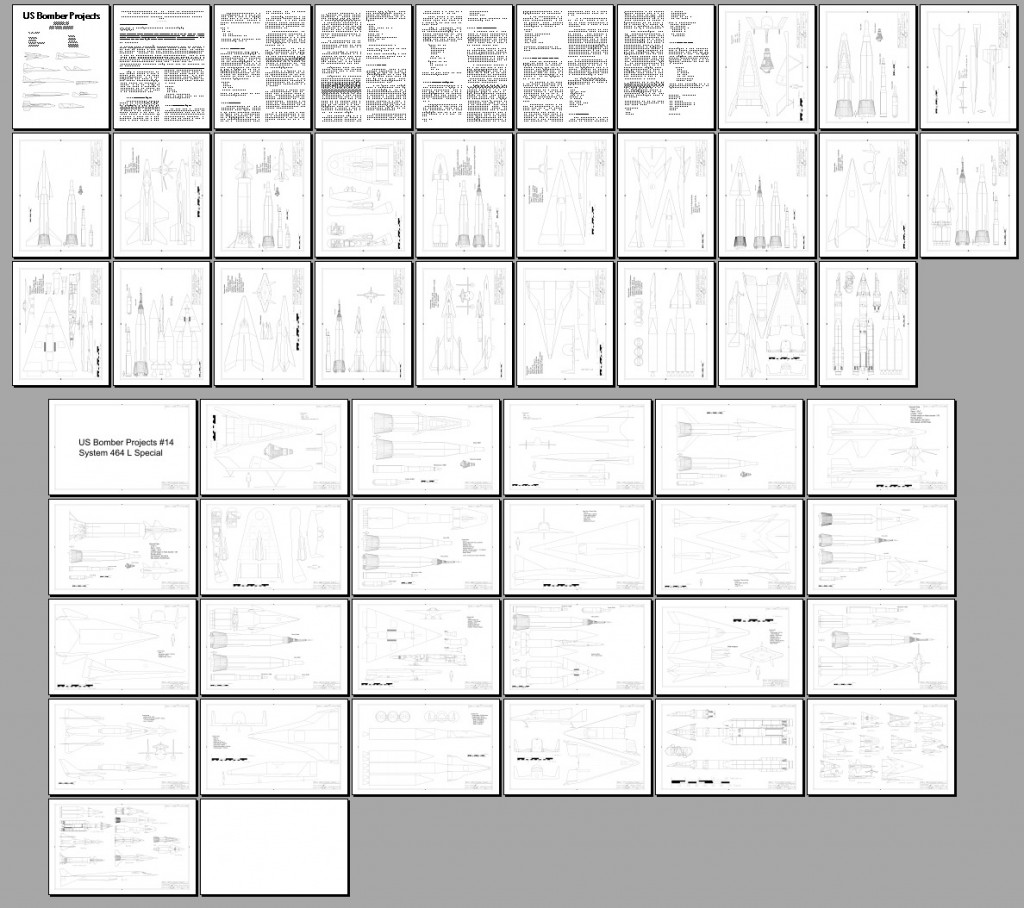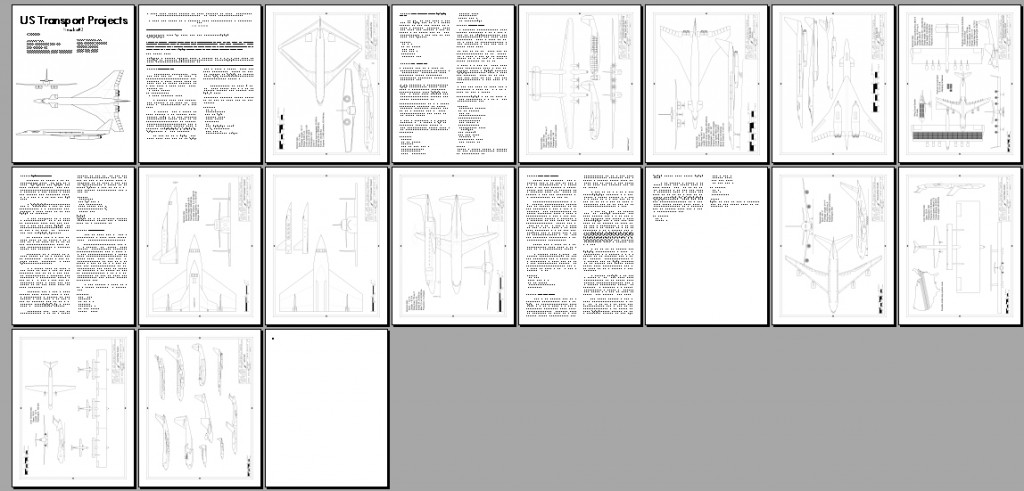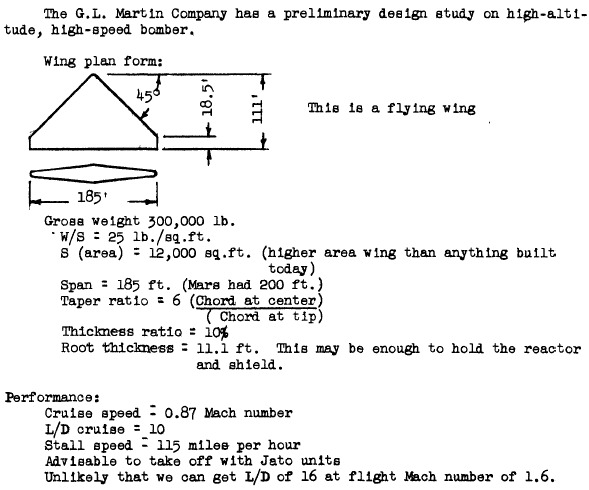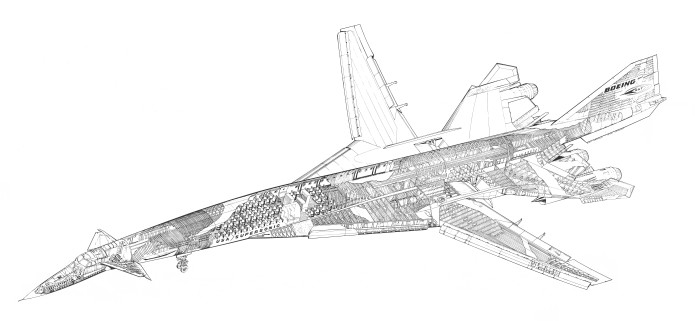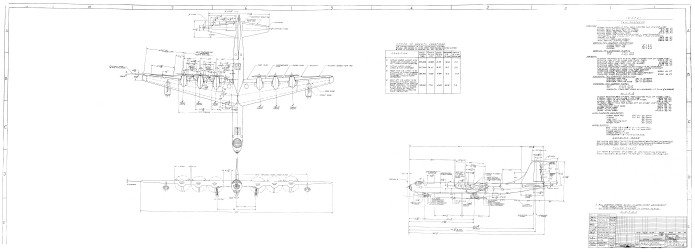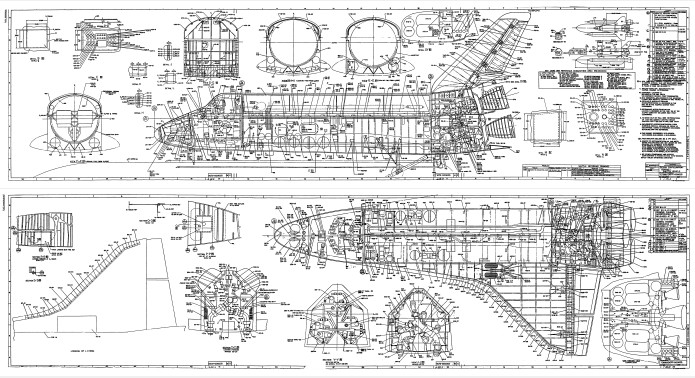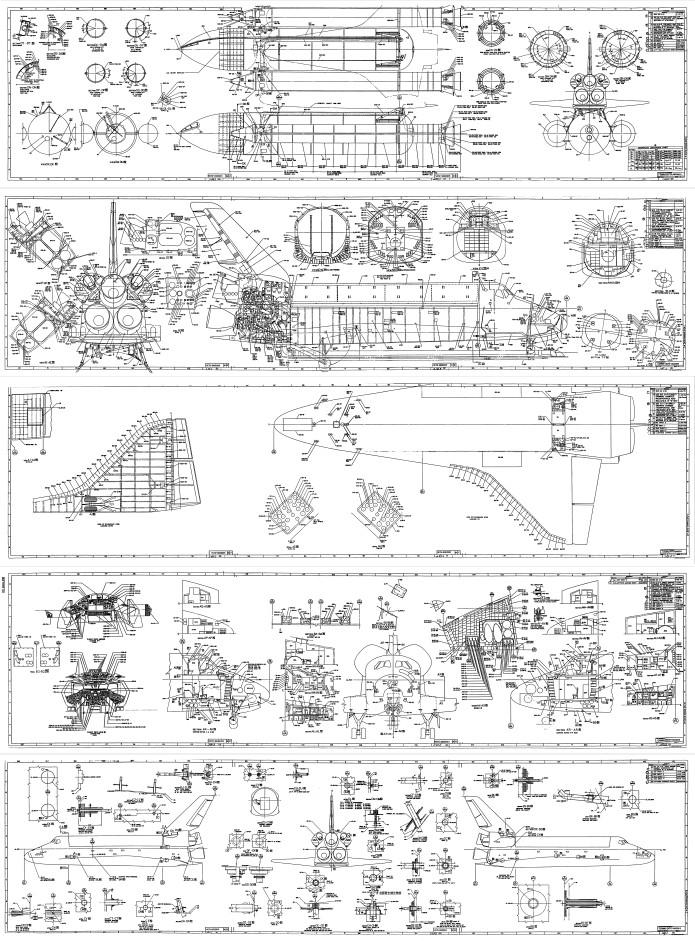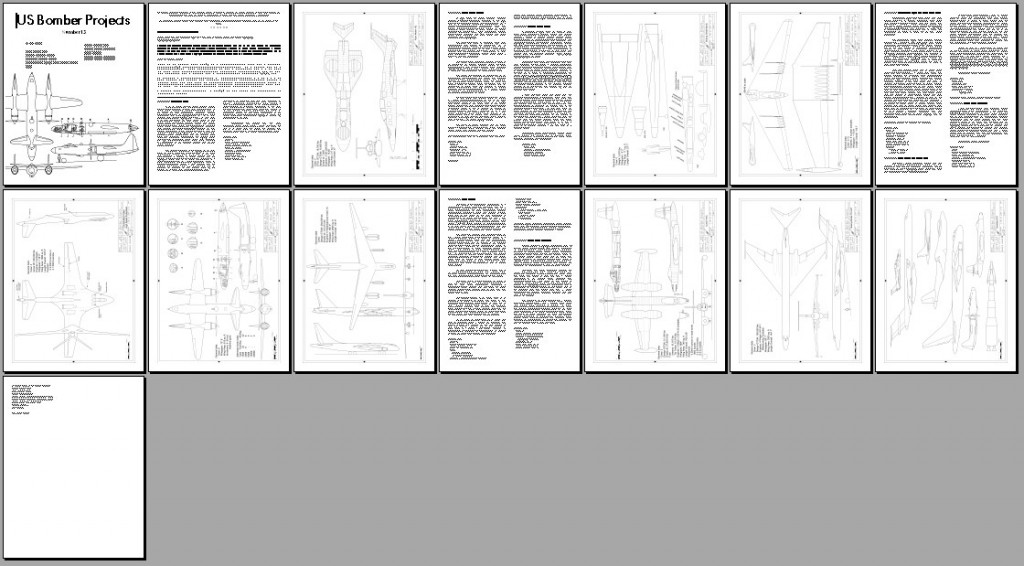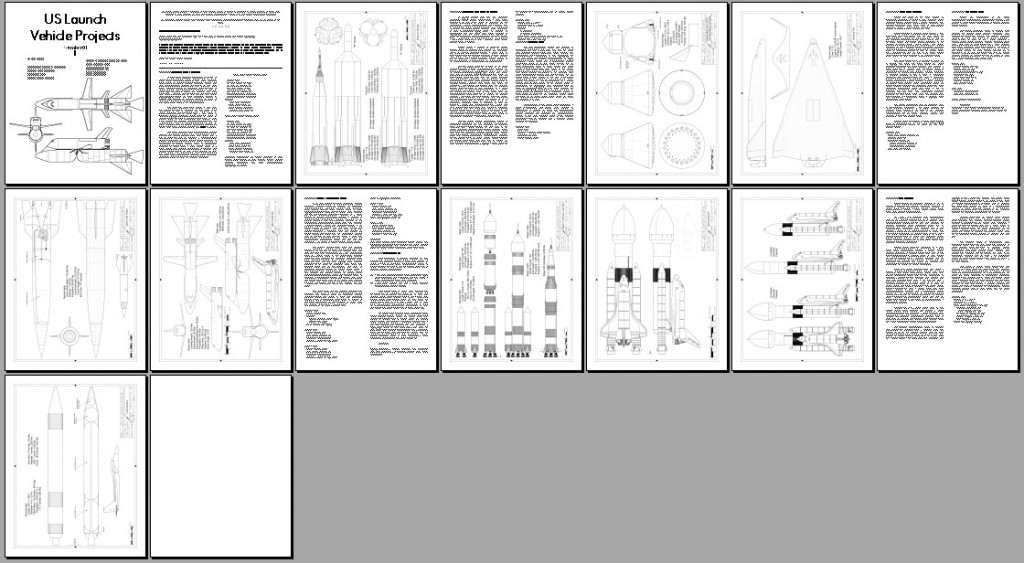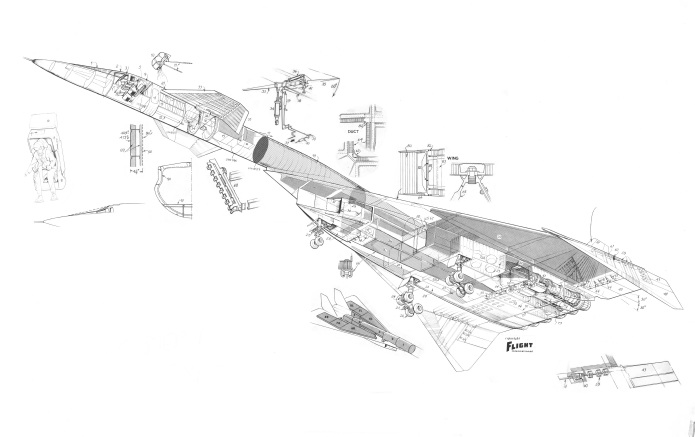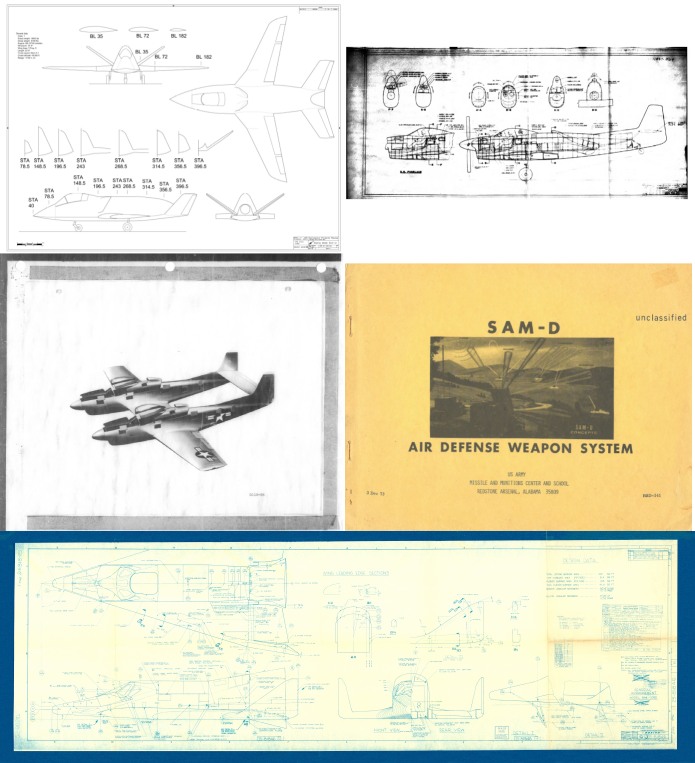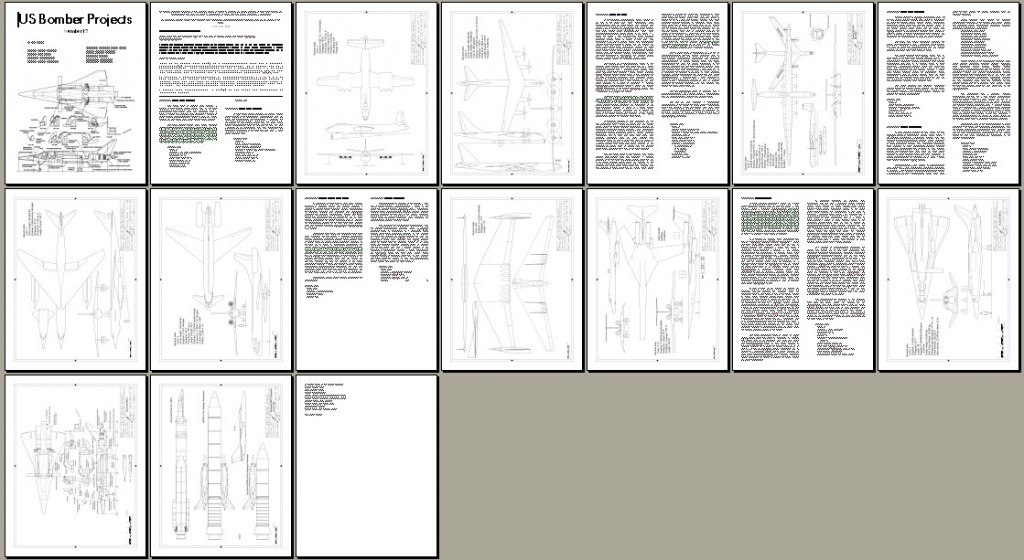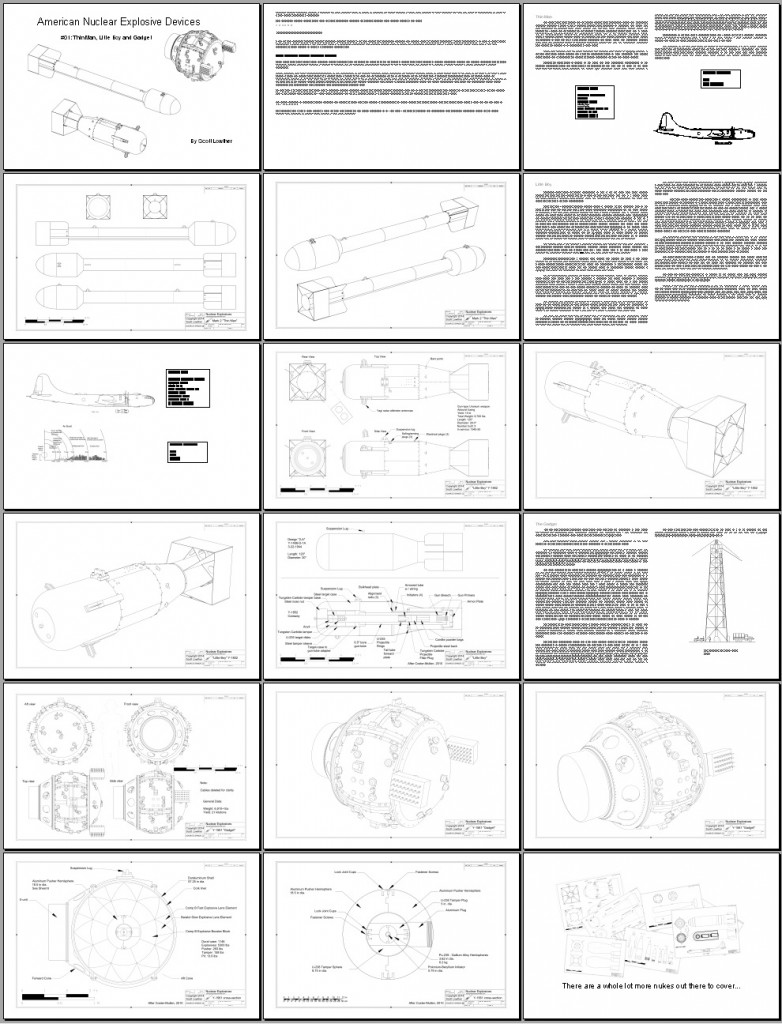Just added five more issues to Amazon for $2.99 each. These are Kindle-fied versions of the issues otherwise available as PDFs here.
Now available… two new additions to the US Aerospace Projects series.
US Bomber Projects #14: System 464L Special
USBP#14 brings together the competitors to Weapon System 464L, the first major effort in the Dyna Soar program. These designs were previously shown individually in prior issues of USBP; here they are brought together, with some updates, as well as a few extra diagrams and a section of diagrams formatted for 11X17 printing. This issue includes info and diagrams of the Lockheed, Republic, General Dynamics, McDonnell, Boeing, Douglas, Northrop, North American and Martin-Bell entries as well as their various booster systems. Also included are detailed diagrams of the ultimate Dyna Soar design, the 2050E.
USBP#14 can be purchased for downloading for the low, low price of $6.25.
Also available:US Transport Projects #03.
Included in this issue:
- Lockheed “Environmentally Responsible Aviation” box-wing jetliner
- Martin Commercial Twin-Hull concept from 1942
- North American Aviation NAC-60 SST competitor
- McDonnell-Douglas Cargo Spanloader
- Boeing Model 763-058 “New Large Airplane”
- BoMi Passenger Transport Rocket
- Lockheed L-152-1 early jet transport with unusual inlets
- Aerial Relay System: for when crazy is preferred
USTP #03 can be purchased for download for only $4.25:
More than sixty years ago, the US government and various aeronautical contractors began examining the application of atomic energy to powering aircraft. A mountain of documentation was produced, much of which has been lost, forgotten or is still locked behind classification. But some things come out from time to time that provide tantalizing hints as to what the designers of the time were thinking.
One such document is a short memo from June, 1948, describing a lecture given to unnamed staff by one William van Zelm of the Glenn L. Martin Corporation, describing aspects of aircraft design for atomic flight. Being simply a description of the lecture, the details are lean, but a sketch was included:
The design, crude and simply reproduced as it is, looks very reminiscent of a number of “stealth” aircraft that have been designed over the years including the A-12 Avenger II and the General Dynamics “Sneaky Pete” concept. This one, of course, was nuclear powered and apparently capable of supersonic speeds. It would be interesting to find more about this particular design.
The memo can be downloaded HERE.
Much more aerospace stuff is available via the APR Patreon.
I have made some adjustments to the Aerospace Projects Review Patreon campaign. The first is that I’ve reduced the number of rewards levels, which I was informed was previously Too Many. More importantly, I have added some new rewards: if you become a patron at $5 or more per month, you receive 10% off all future purchases of APR, US Aerospace Projects and downloadable Documents and Drawings. If you become a patron at $10 per month, you will receive 20% off any such purchases. Check of the APR Patreon here: https://www.patreon.com/user?u=197906
Additionally, the campaign has reached the point where the rewards are now *three* aerospace documents, one high-rez historical diagram and one all-new CAD diagram per month. This is in addition to the random “Extras” I throw in for $4 and up patrons. The most recent extra is a full-rez restoration of a three-view diagram of a 1978 McDonnell-Douglas concept for modifying Skylab to be serviced by the Space Shuttle. You can see a smaller-rez version of that here: http://www.aerospaceprojectsreview.com/blog/?p=2153
If you sign up now you will get the latest rewards which include:
- A Bell Aircraft presentation on the SR-126 Bomber Missile, a manned ICBM predecessor of the Dyna Soar
- A Lockheed paper on the history of the Polaris to Trident Fleet Ballistic Missile
- A large poster illustrating the missiles and rockets of the Orbital Sciences Corporation
- An all-new CAD diagram detailing the 10-meter Orion nuclear pulse propulsion vehicle designed by General Atomic for the USAF
I have a batch of new large format cyanotype blueprints coming along (the files for the transparencies are at the print shop now). Weather permitting, I should start producing these in a week or so… but the question is: how many to print up? I’m not yet taking orders, but I am trying to gauge interest. So if you see something here you think you’ll want, please let me know via either comment or email. Remember that as well as the cost of the prints there will also be postage… $10 in the US, $18 elsewhere, regardless of how many prints are ordered.
2707-200 Supersonic Transport, 48 inches by 22: $50
————-
B-36D, 61 inches by 22: $60
————-
Shuttle diagrams, set A: 41 inches by 11 (two sheets): $50
——————
Shuttle diagrams, set B: 41 inches by 11 (five sheets): $125
———————-
Trident SLBM: 49X11, $25
Two new publications in the US Aerospace Projects series are now available.
Now available: US Bomber Projects #13. This issue includes:
- Ryan Model 162: A VTOL strike/recon plane
- Boeing Orbital Bomb: a nuclear-tipped re-entry glider
- Northrop Atomic Wing: an asymetric nuclear powered design
- Consolidated Vultee High Speed Flying Boat: an early post-war Skate design
- Martin Model 189: a canard version of the B-26 Marauder
- Boeing Model 464-046: A six-engined B-52 predecessor
- Curtis F-87C: a night fighter with bomber abilities
- Boeing Model 701-247: a supersonic antecedent of the B-59
USBP #13 can be downloaded as a PDF file for only $4.25:
———
Also available: US Launch Vehicle Projects #01. The premiere issue of this new series includes:
- Pre-Saturn Phase III Vehicles: 1958 concpet for clustered Atlas boosters
- Boeing “Big Onion”: an SSTO to launch SPS
- Northrop TAV: an in-flight propellant transfer spaceplane
- Martin Orbit Project: A 1946 concept for a hydrogen fueled SSTO
- Saturn V derived HLLV for FLO: A brief Saturn V revival in the early 1990s
- MSC Orbiter 020: An early Shuttle with straight wings and a single SRB
- Hammerhead ET: a way for the Shuttle to transport outsized payloads
- Loral Aquarius: A way to make space launch cheap
USLP #01 can be downloaded as a PDF file for only $4.25:
———
I have been busy with a number of things recently (some good, some bad), which has clearly reduced my Aerospace History blogification substantially. So… here’s a cutaway of the XB-70:
Granted, it’s tiny. However, a far bigger version of this illustration, created Way Back When for “Flight” magazine, is available on the Flight archives, right HERE. From back when such bits of beauty were created by hand.
There was a delay getting the December rewards out, and a further delay in putting this notification together that the rewards are available… so it might be only a short-ish time before these are gone, replaced by the *January* rewards. So if these look of interest… act fast!
PDF Document: “Design Study for an Air Force Model F-82E Airplane Modified to a Ground Attack Aircraft with Allison XT-38 Turbo Prop Engine,” a North American Aviation report from 1948. This was not for a simple engine swap-out… the cockpits were moved forward and the engines located behind them, driving the props with long shafts.
PDF Document: “SAM-D Air Defense Weapon System,” a 1973 US Army description document of what would become the Patriot missile system.
Large Format Diagram: a large-format full-color (w/bonus grayscale versions) diagram of the X-20 Dyna Soar. Very detailed and clear. Looks great on a wall (believe me on that!)
CAD Diagram: Boeing Model 853-21 “Quiet Bird” a 1961 design study for a low radar cross section (i.e. stealthy) research aircraft.
If you would like to access these items and support the cause of acquiring and sharing these pieces of aerospace history, please visit my Patreon page and consider contributing.
The latest releases in the “US Aerospace Projects” line (see the full library HERE):
US Bomber Projects #12 contents:
- Boeing Model 464-41: A turboprop B-52 predecessor
- Boeing “Big Bird”: a long-durational, low-speed, low-altitude missile carrying loiterer
- Douglas MX-2091-E: A 1950’s canard configured missile carrier
- Boeing Model 701-238: A supersonic design on the road to the B-59
- Northrop Nuclear Flying Wing: Atomic power with two crew pods
- Martin Model 223-12: the final design in the XB-48 design series
- Rockwell MRCC: An airplane that could be tossed into space atop an RSRM
- Lockheed CL-820-8: A Mach 3 variable-geometry design
USBP #12 can be downloaded as a PDF file for only $4.25:
——–
—-
————–
New: American Nuclear Explosive Devices #01
This is a prototype issue for what may become a series but which I hope to turn into a Real Book. The plan is to eventually document via accurate and detailed diagrams every nuclear explosive device produced by the US (obviously some are a little lean on declassified data). This includes bombs, Re-Entry Vehicles, a few actual “physics packages” and some stand-alone test devices. ANED01 contains information and diagrams of the first three atom bombs worked on by the US: the Thin Man and Little Boy air-droppable bombs and the Trinity “Gadget” test device. The American Nuclear Explosive Devices webpage is HERE.
ANED01 is formatted for 11X17, so the diagrams are good and large.
ANED #01 can be downloaded as a PDF file for only $4:
——–
I’ve written a short and illustrated piece on how the Dyna Soar can illustrate the possible capabilities of the X-37B over at War Is Boring:
Wondering What the U.S. Air Force’s Secretive Spaceplane Can Do? History Offers Clues
I am contemplating expanding this considerably for a separate release. It’d be a little different from the usual sort of thing I do, since the X-37B is a real flying vehicle, not just an unbuilt project.

